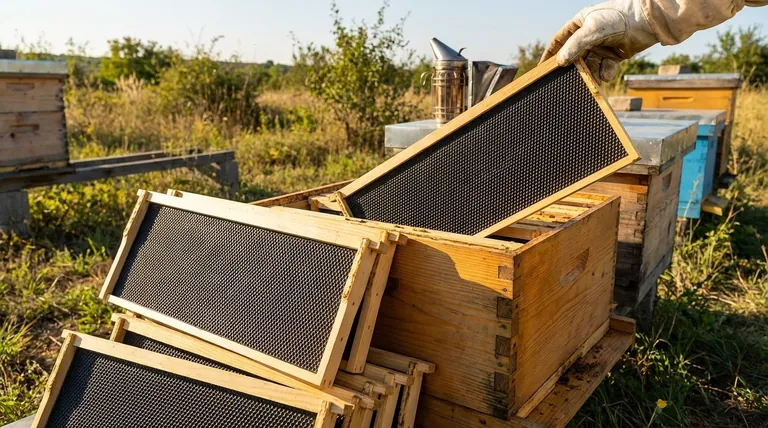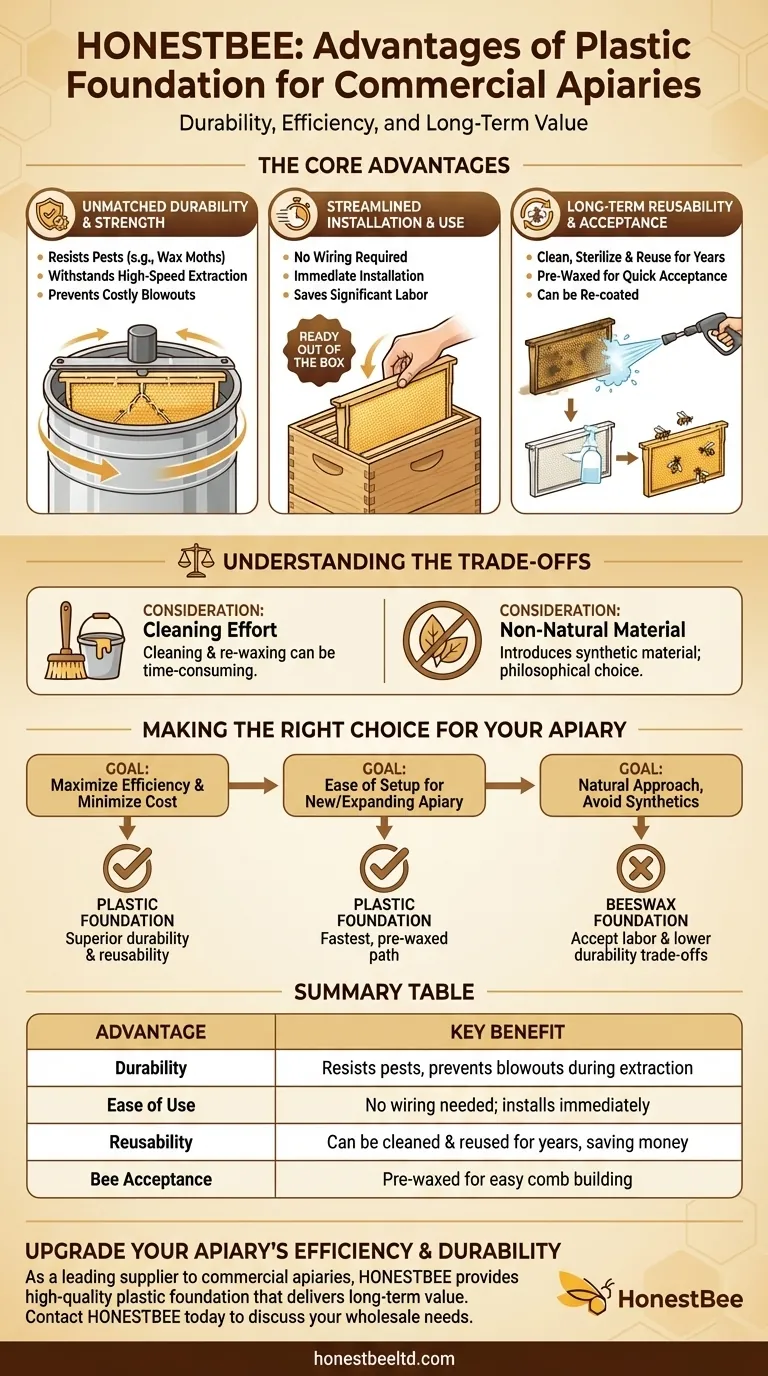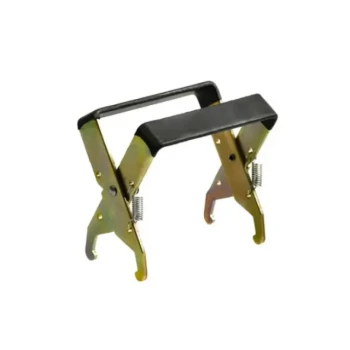The primary advantages of using plastic foundation are its exceptional durability, ease of use, and long-term reusability. Unlike traditional wax, plastic foundation can be installed immediately without wiring, withstands damage from pests and extraction, and can be cleaned and reused for years, saving beekeepers significant time, labor, and money.
The choice of hive foundation is a fundamental decision in apiary management. Plastic foundation represents a shift toward operational efficiency, offering a robust and reliable structure that streamlines hive maintenance and honey harvesting at the cost of introducing a non-natural material into the hive.

The Core Advantages of Plastic Foundation
Plastic foundation has become a preferred choice for many beekeepers, especially in commercial operations, due to a clear set of practical benefits that directly impact the workflow and economics of beekeeping.
Unmatched Durability and Strength
Plastic foundation is far more rigid and durable than its beeswax counterpart. This inherent strength provides critical advantages both inside the hive and in the honey house.
It is highly resistant to damage from pests like wax moths. The robust structure also holds up exceptionally well during the high-speed centrifugal force of honey extraction, preventing costly "blowouts" that can destroy a comb.
Streamlined Installation and Use
One of the most immediate benefits is ease of installation. Plastic foundation is designed to be used right out of the box, fitting quickly into frames with grooved top and bottom bars.
This completely eliminates the tedious and time-consuming process of wiring frames, which is required to support pure beeswax foundation. This feature alone saves considerable labor.
Bee Acceptance and Preparation
Most plastic foundation comes with a pre-applied coating of beeswax to encourage the bees to accept it and begin drawing comb.
For even better results, many experienced beekeepers will brush or roll on an additional thin layer of melted beeswax. This simple step significantly increases the rate at which bees will build upon the plastic base.
Understanding the Trade-offs
While the benefits are significant, an objective assessment requires understanding the associated considerations and potential downsides.
Reusability vs. Cleaning Effort
A key economic advantage is that plastic frames can be reused almost indefinitely. After a pest infestation or at the end of its use cycle, the frame can be scraped clean.
The frame can then be pressure washed and even bleached to sterilize it before a new coat of wax is applied. However, it's important to note that this cleaning and rewaxing process can be very time-consuming.
Introducing Plastic into the Hive
For some beekeepers, the primary drawback is philosophical. They prefer to avoid introducing any synthetic materials into the hive environment, aiming for a more "natural" approach.
While the plastic itself is inert and does not directly harm the bees, this remains a valid consideration based on individual beekeeping values.
Making the Right Choice for Your Apiary
Ultimately, the decision to use plastic foundation depends on your specific goals, scale, and management philosophy.
- If your primary focus is maximizing efficiency and minimizing long-term costs: Plastic foundation is the superior choice due to its extreme durability and reusability.
- If your primary focus is ease of setup for a new or expanding apiary: Pre-waxed plastic foundation offers the fastest and most straightforward path from box to bee-ready frame.
- If your primary focus is a natural approach that avoids synthetic materials: You should use traditional beeswax foundation, accepting the trade-offs in labor and lower durability.
Choosing the right foundation is about aligning your equipment with your operational goals.
Summary Table:
| Advantage | Key Benefit |
|---|---|
| Durability | Resists pests, prevents blowouts during extraction |
| Ease of Use | No wiring needed; installs immediately |
| Reusability | Can be cleaned and reused for years, saving money |
| Bee Acceptance | Pre-waxed for easy comb building |
Ready to upgrade your apiary's efficiency and durability?
As a leading supplier of beekeeping supplies and equipment to commercial apiaries and distributors, HONESTBEE provides high-quality plastic foundation that delivers long-term value. Our products are designed to withstand the rigors of commercial beekeeping, saving you time and money.
Contact HONESTBEE today to discuss your wholesale needs and discover how our durable beekeeping solutions can benefit your operation.
Visual Guide

Related Products
- Food Grade Plastic bee Foundation for Bee Frames
- Durable Rubberized Comfort Handle Frame Grip
- Premium Frame Grip with Ergonomic Wood Handles
- Durable Galvanized Steel Frame Grip
- HONESTBEE Professional Long Handled Hive Tool with Precision Cutting Blade
People Also Ask
- What factors should beekeepers consider when choosing between beeswax and plastic foundation? A Guide to Durability vs. Natural Philosophy
- Why is it beneficial to coat plastic foundation with beeswax? Boost Hive Acceptance & Comb Building
- How to get bees to use plastic foundation? Master the Wax Coating and Resource Strategy
- Why do commercial beekeepers prefer plastic foundation? Durable, Reusable, and Cost-Effective
- Does plastic foundation affect honey quality or taste? A Practical Guide for Beekeepers



















